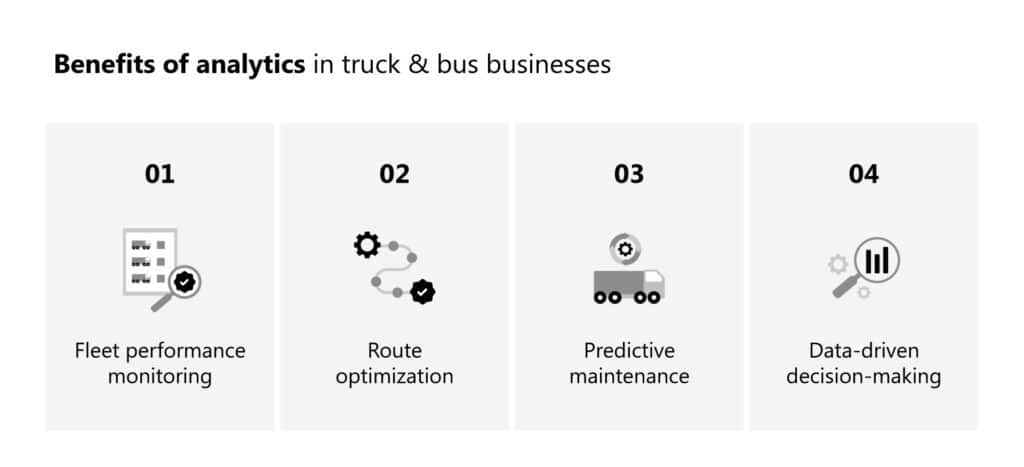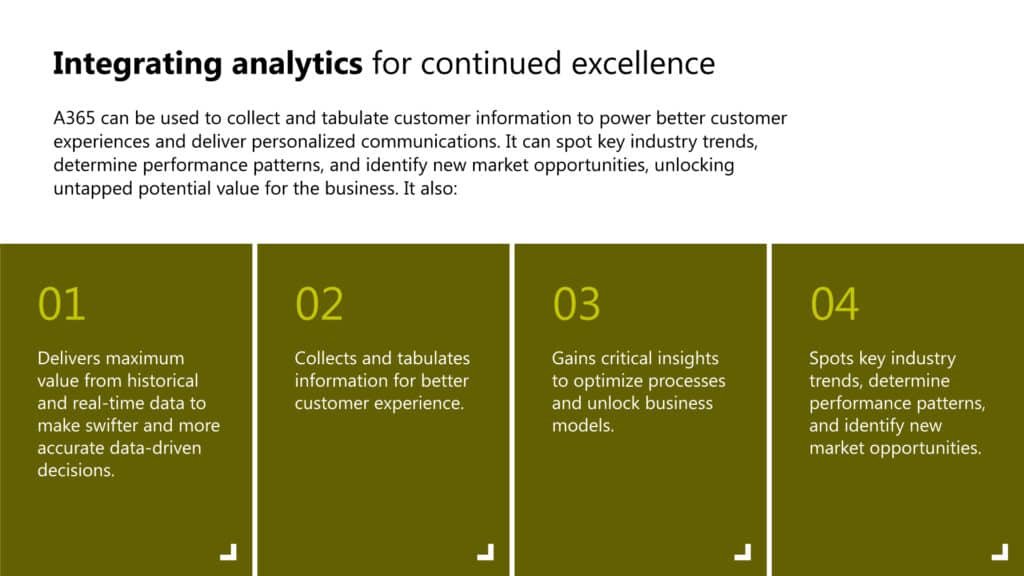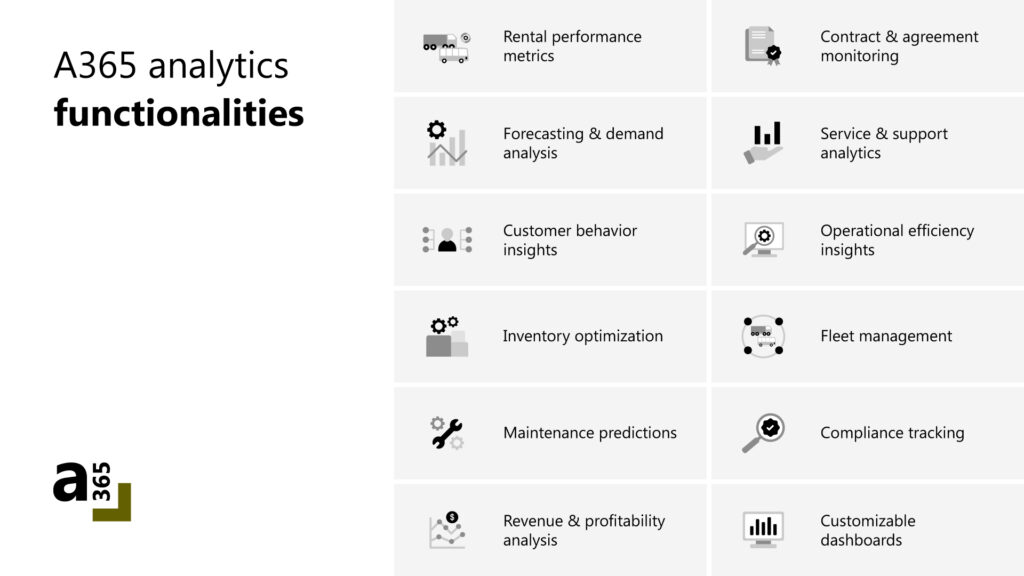In the dynamic world of trucks and buses, analytics is revolutionizing operations. Swiftly becoming an essential tool, analytics transforms the industry by converting vast data into actionable insights. Unlike manual methods, analytics provides a data-driven approach, facilitating informed decisions at every operational level.
It offers real-time fleet monitoring, predictive maintenance, and strategic customer insights. As the demand for operational excellence grows, analytics becomes a strategic imperative, propelling the industry into a new era of intelligent, data-driven decision-making.
Benefits of analytics in truck & bus businesses

Fleet performance monitoring
One of the pivotal areas where analytics demonstrates its prowess is in monitoring fleet performance. No longer confined to manual checks and routine maintenance schedules, analytics transforms each vehicle into a data hub, transmitting real-time information about its health, fuel efficiency, and overall performance. This not only ensures proactive maintenance but also significantly extends the lifespan of the fleet.
In a bus company, analytics continuously monitors real-time data on engine performance, tire conditions, and fuel efficiency. Any anomalies trigger maintenance alerts, allowing proactive issue resolution and minimizing downtime. This strategy not only ensures fleet health but also significantly reduces overall maintenance costs.
Route Optimization
Routing serves as the backbone of any successful logistics operation, and analytics introduces a layer of intelligence that transforms traditional route planning. By analyzing historical data, traffic patterns, and weather conditions, analytics algorithms can suggest the most efficient routes in real-time. This not only minimizes fuel consumption but also ensures timely deliveries, thereby bolstering customer satisfaction.
Consider a delivery truck navigating through a city. Analytics processes real-time data on traffic conditions, construction sites, and even events that might impact roads. The system dynamically adjusts the route, optimizing for the fastest and most fuel-efficient path. This saves operational costs and enhances customer satisfaction by ensuring on-time deliveries.
Predictive maintenance
The era of reactive maintenance is fading, making room for predictive maintenance powered by analytics. By scrutinizing data on vehicle health, usage patterns, and environmental factors, analytics predicts potential issues before they escalate. This approach not only saves on repair costs but also prevents unexpected breakdowns, contributing to increased operational reliability.
Picture a logistics company that uses predictive maintenance analytics. The system analyzes data on each truck’s historical performance, identifying patterns that precede certain types of failures. If the analytics predict a potential issue, the vehicle can be taken out of service for preventive maintenance, avoiding a breakdown on a critical delivery route.
Data-driven decision-making
Beyond the nuts and bolts, analytics fosters a culture of data-driven decision-making. Whether it’s optimizing inventory levels, managing work schedules, or fine-tuning supply chain processes, every aspect of truck and bus operations benefits from informed choices. This, in turn, enhances overall operational efficiency and agility.
Imagine a logistics company using analytics to optimize its supply chain. By analyzing data on demand fluctuations, production cycles, and supplier performance, the company can make informed decisions about inventory levels. This prevents overstocking or stockouts, ensuring that resources are utilized optimally and reducing unnecessary costs.
Integrating analytics for continued excellence
The integration of analytics stands as a beacon of innovation for truck and bus businesses. Solutions like A365 seamlessly embed analytics into your core of business operations, creating a dynamic ecosystem where data fuels not only efficiency but also strategic growth.
A365 empowers your business with data and insights that are necessary to increase operational efficiency and optimize business outcomes. This is done by enhancing workflow and embedding efficiencies to make swifter and more accurate data-driven informed decisions.

A365 Analytics functionality

Rental performance metrics: Tracking key performance indicators (KPIs) such as utilization rates, rental revenue, and fleet availability.
Example: A car rental company uses A365 analytics to track utilization rates. By analyzing data, they find that certain vehicle models are consistently underutilized. This insight prompts the company to adjust its fleet mix, phasing out less popular models and introducing more of the in-demand vehicles, ultimately increasing overall fleet utilization.
Forecasting & demand analysis: Predicting future rental demands based on historical data and market trends.
Example: A365 analytics predicts a surge in demand for cargo vans during the holiday season based on historical data and market trends. Armed with this foresight, a logistics company proactively increases its van fleet, ensuring it can meet the peak demand and capitalize on the seasonal opportunity.
Inventory optimization: Analyzing inventory levels and turnover to ensure efficient vehicle availability.
Example: An A365 user in the trucking industry analyzes inventory turnover rates. Recognizing that certain vehicles are consistently slow-moving, the company decides to sell off older models and invest in newer, more fuel-efficient trucks, thereby optimizing their inventory and reducing maintenance costs.
Customer behavior insights: Understanding customer preferences and behaviors to tailor services and offerings.
Example: A moving truck company leverages A365 analytics to analyze customer behavior. By understanding that a significant portion of their users prefers electric trucks for short trips, the service expands its electric vehicle fleet, meeting customer preferences and enhancing user satisfaction.
Maintenance predictions: Using data to anticipate maintenance needs, minimizing downtime and costs.
Example: A logistics company uses A365 analytics to predict maintenance needs for its delivery trucks. By analyzing historical maintenance data and usage patterns, the system forecasts potential issues, allowing the company to schedule proactive maintenance during off-peak hours, minimizing downtime, and preventing costly breakdowns.
Revenue & profitability analysis: Assessing revenue streams, costs, and profitability for strategic decision-making.
Example: A365 reveals that a rental company’s profits are higher from business clients than individual customers. Armed with this insight, the company adjusts its marketing strategy to attract more corporate clients, ultimately increasing overall revenue and profitability.
Contract & agreement monitoring: Tracking the performance of rental agreements and contracts.
Example: A bus rental firm utilizes A365 to monitor the performance of rental agreements. By tracking metrics such as on-time returns and vehicle condition at the end of each rental period, the company ensures contractual compliance and identifies areas for improvement in its customer engagement processes.
Service & support analytics: Analyzing service requests, response times, and customer satisfaction.
Example: A365 helps a vehicle leasing company analyze service requests and response times. By identifying trends in customer concerns and streamlining service processes, the company improves overall customer satisfaction and builds a reputation for responsive and reliable service.
Operational efficiency insights: Identifying areas for operational improvement and streamlining workflows.
Example: A trucking company employs A365 to identify bottlenecks in its logistics operations. By analyzing data on delivery times, route efficiency, and loading/unloading processes, they streamline workflows, reduce delivery times, and enhance overall operational efficiency.
Fleet management: Analyzing vehicle lifecycle, maintenance, and depreciation trends.
Example: A365 analytics is used to analyze the entire lifecycle of a vehicle fleet. By tracking maintenance costs, depreciation trends, and resale values, a leasing company optimizes its fleet replacement strategy, ensuring a cost-effective balance between keeping newer, reliable vehicles and managing depreciation.
Compliance tracking: Monitoring adherence to regulations and compliance standards.
Example: A transportation company employs A365 to monitor compliance with safety regulations. By tracking driver hours, vehicle maintenance records, and adherence to transportation laws, the company ensures regulatory compliance, avoiding penalties and maintaining a safe operating environment.
Customizable dashboards: Allowing users to create personalized dashboards for relevant metrics.
Example: An A365 user in the truck rental industry creates a personalized dashboard. This dashboard includes metrics such as vehicle utilization rates, revenue per vehicle, and maintenance costs. This allows the fleet manager to have a real-time, at-a-glance view of key performance indicators tailored to their specific needs and priorities.
As technology continues to evolve, the truck and bus industry is poised to thrive on the insights provided by analytics, marking a new era of intelligent, data-driven transportation. Get your truck and bus business ready for this new era with A365. Connect with us to find out more.





